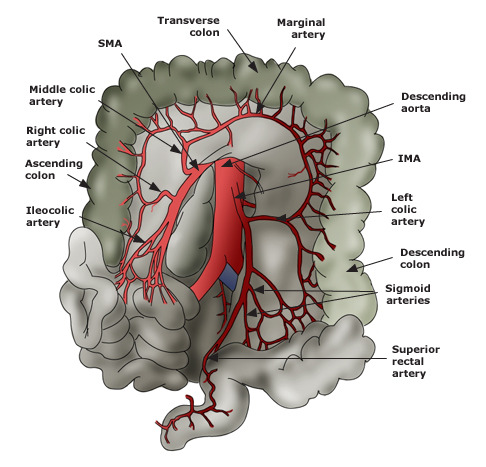
Hemorrhoids: Symptoms and Treatment
Hemorrhoids are swollen veins in the lower rectum and anus, similar to varicose veins. They can be painful and uncomfortable and cause rectal bleeding. Hemorrhoids are very common, with nearly three out of four adults experiencing them at some point in their lives. Understanding the symptoms and treatment options for hemorrhoids can help manage and alleviate this condition effectively.
Symptoms of Hemorrhoids
Hemorrhoids can be either internal or external, and the symptoms vary accordingly.
Internal Hemorrhoids
Internal hemorrhoids lie inside the rectum. You usually can’t see or feel these hemorrhoids, and they rarely cause discomfort. However, straining or irritation when passing stool can damage a hemorrhoid’s surface and cause bleeding. Occasionally, straining can push an internal hemorrhoid through the anal opening. This is known as a protruding or prolapsed hemorrhoid and can cause pain and irritation.
External Hemorrhoids
External hemorrhoids are under the skin around the anus. When irritated, external hemorrhoids can itch or bleed. Sometimes blood may pool in an external hemorrhoid and form a clot (thrombus) that can result in severe pain, swelling, inflammation, and a hard lump near your anus.
Common Symptoms
- Bleeding: Bright red blood on toilet paper or in the toilet bowl after a bowel movement.
- Itching or Irritation: Particularly in the anal region.
- Pain or Discomfort: Especially during bowel movements or when sitting.
- Swelling: Around the anus.
- Lumps: Sensitive or painful lumps near the anus.
Treatment Options for Hemorrhoids
The treatment for hemorrhoids depends on their severity and the symptoms they cause. Many people can manage symptoms with at-home treatments and lifestyle changes.
Home Treatments
Dietary Changes
A high-fiber diet can help soften stools and increase their bulk, reducing the straining that can cause or worsen hemorrhoids. Eating more fruits, vegetables, and whole grains can help. Over-the-counter fiber supplements can also be beneficial.
Hydration
Drinking plenty of water can prevent constipation and reduce the strain during bowel movements. Adequate hydration is essential for maintaining regular bowel movements.
Topical Treatments
Over-the-counter creams, ointments, or suppositories can provide temporary relief from hemorrhoid symptoms. These products often contain ingredients like witch hazel, hydrocortisone, or lidocaine to reduce pain and itching.
Warm Baths
Soaking the anal area in warm water several times a day can help reduce swelling and discomfort. Sitz baths, available at pharmacies, fit over the toilet and make soaking easier.
Cold Compresses
Applying ice packs or cold compresses to the affected area can help reduce swelling and numb the pain. It’s important to use a cloth or towel to protect the skin from direct contact with the ice.
Medical Treatments
If home treatments do not provide relief, several medical procedures can be considered:
Rubber Band Ligation
This procedure involves placing a rubber band around the base of an internal hemorrhoid to cut off its blood supply. The hemorrhoid shrivels and falls off within a week.
Sclerotherapy
In this procedure, a chemical solution is injected into the hemorrhoid tissue to shrink it. Sclerotherapy is less painful and causes minimal discomfort.
Infrared, Laser, or Bipolar Coagulation
These techniques use heat, laser, or electrical currents to create scar tissue, cutting off the hemorrhoid’s blood supply and causing it to shrink.
Hemorrhoidectomy
This surgical procedure involves the removal of large external hemorrhoids and prolapsed internal hemorrhoids. Hemorrhoidectomy is the most effective and complete way to treat severe or recurring hemorrhoids.
Stapled Hemorrhoidopexy
This procedure, also known as stapling, blocks blood flow to hemorrhoid tissue. It is generally used for prolapsed hemorrhoids and is less painful than hemorrhoidectomy with a quicker recovery time.
Lifestyle Changes
Regular Exercise
Regular physical activity can help stimulate bowel function and reduce the likelihood of constipation. Activities such as walking, swimming, and yoga can be particularly beneficial.
Avoiding Straining
Straining during bowel movements can exacerbate hemorrhoids. Avoiding prolonged sitting and not delaying bowel movements when the urge arises can help prevent straining.
Understanding the symptoms and treatment options for hemorrhoids can help manage and alleviate this common condition. From home remedies and lifestyle changes to medical procedures, various approaches can provide relief and improve quality of life. For persistent or severe hemorrhoid symptoms, consulting a healthcare professional is essential for appropriate treatment and management.
